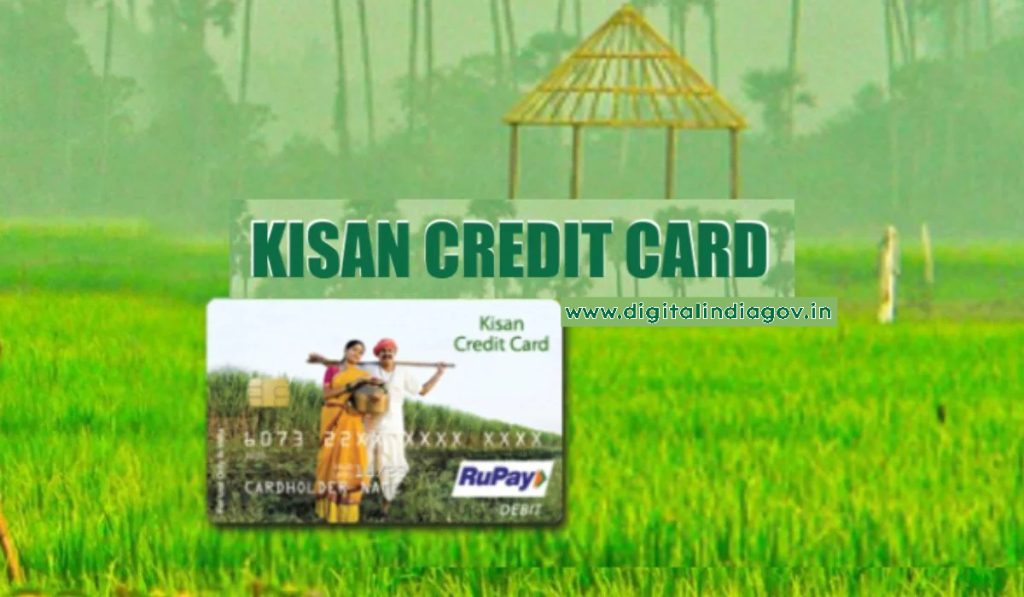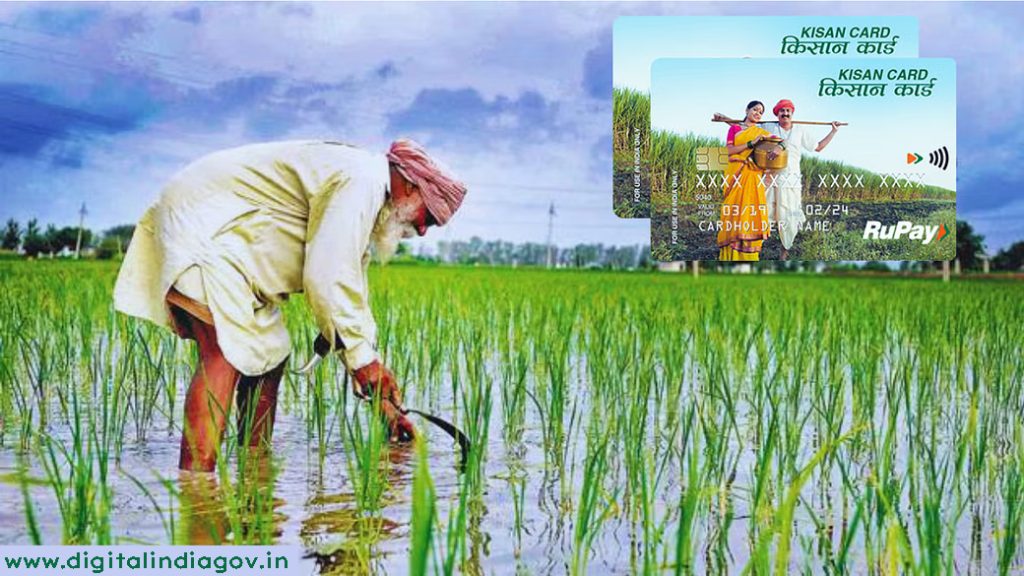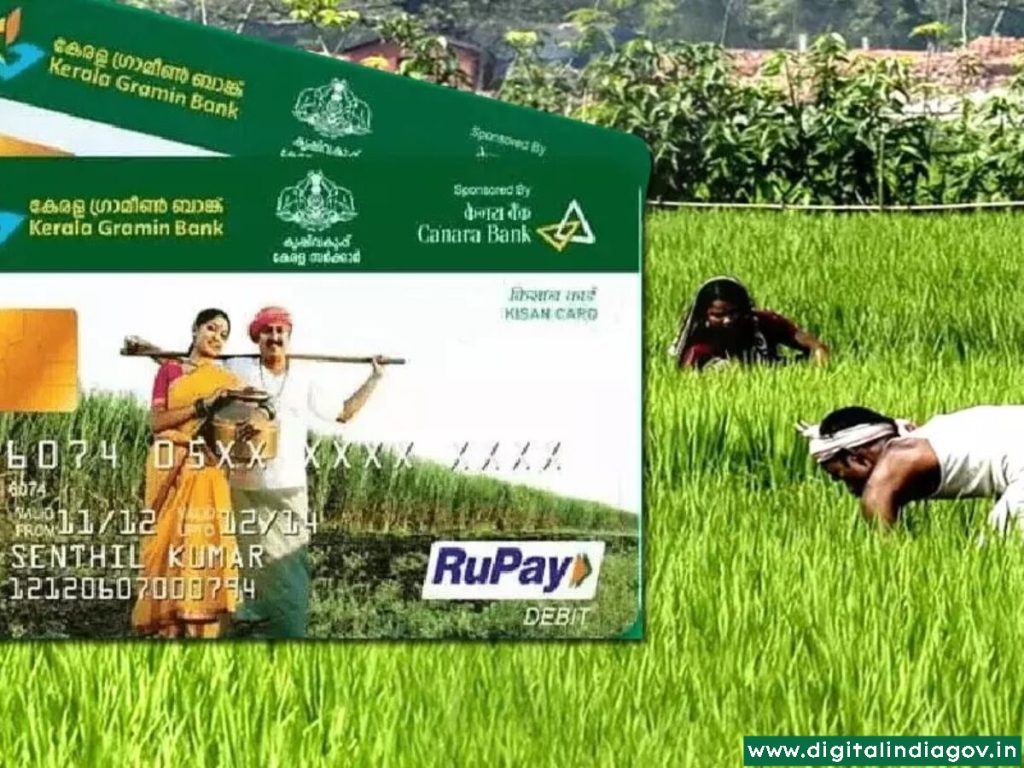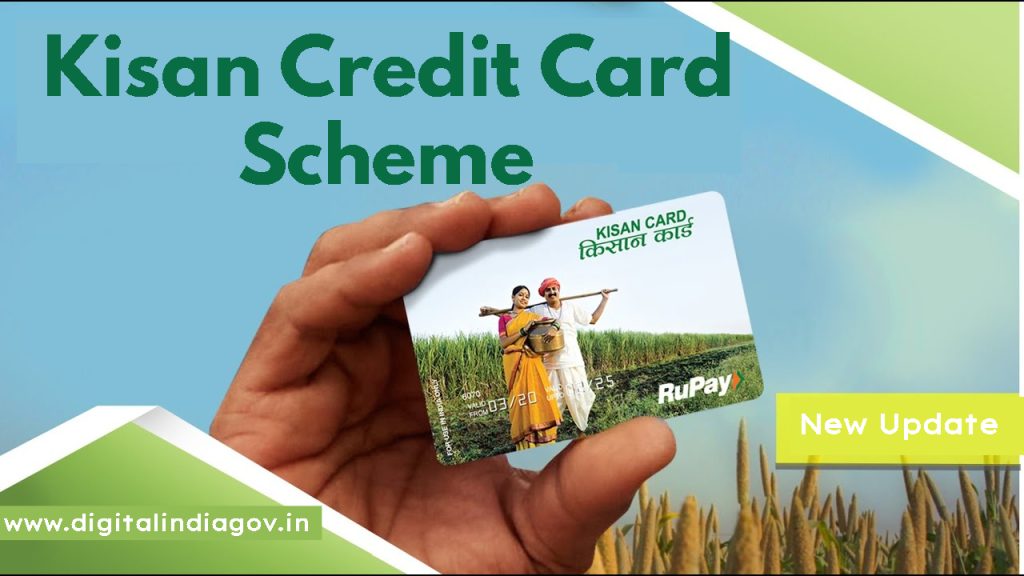Kisan Credit Card Scheme:- The Government of India launched the innovative Kisan Finance Card (KCC) plan as a means of giving farmers access to timely and sufficient financial support. The program, which was introduced in 1998, attempts to satisfy farmers’ needs for short-term loans for crop production, post-harvest costs, upkeep of agricultural equipment, and related activities.
For qualifying farmers, KCCs are essentially credit cards that banks and other financial institutions issue, giving them easy access to reasonably priced financing for their agricultural needs. This program is essential to raising agricultural output, encouraging contemporary farming methods, and eventually boosting farmers’ standard of living throughout the nation.
Contents
Kisan Credit Cards
A significant development has been quietly taking place in the heart of India, where farming plays a significant role in both the national economy and the lives of the people. One kind of credit card created especially to help farmers with their financial demands is the Kisan Credit Card. Villages are evolving in tandem with cities, even as they use more advanced technologies. For farmers, this card is like a financial superhero, improving their quality of life and providing financial support. The Kisan Credit Card is like a beacon among the farms and crops, assisting farmers in taking care of themselves and showing them the possibility of a better future.

Also Read:- PMEGP Scheme List 2024, Digitize India, Digitize India Platform, Work from Home Jobs
Details on Kisan Credit Card Scheme
The introduction of the KCC Scheme aimed to give farmers timely and sufficient finance for their farming operations. Farmers can obtain financing at a highly subsidized rate of 4% annually thanks to the Government of India’s 2% interest subvention and 3% prompt repayment incentive.
A working group led by Shri T. M. Bhasin, CMD of Indian Bank, reexamined the scheme in 2012 with the goal of streamlining it and making it easier to issue Electronic Kisan Credit Cards. The scheme was first extended in 2004 to cover farmers’ investment credit requirements for allied and non-farm activities. The plan offers bank-wide instructions for putting the KCC plan into practice.
Eligibility for Kisan Credit Card Scheme
The Reserve Bank of India (RBI) issues Master Circulars that outline the requirements for qualifying for a Kisan Credit Card (KCC). These guidelines state that a wide variety of people can apply for a Kisan Credit Card:
- Individual Landowner Cultivators: KCC is available to farmers who possess and manage their own land.
- Tenant Farmers: Farmers who farm the land while renting out their space are also qualified.
- Oral lessees and Sharecroppers: Those who farm the land through an oral lease or sharecropping arrangement are eligible to apply.
- Self-Help Groups (SHGs) and Joint Liability Groups (JLGs): These organizations, which include tenant farmers, oral lessees, sharecroppers, and individual owner cultivators, are qualified for KCC.
- Fishermen with Registered Boats: Qualified fishermen are those who own registered boats and hold a valid license or authorization to fish in estuaries or the ocean.
- Participants in Inland Fisheries and Aquaculture: Women’s groups engaged in inland aquaculture and fisheries, fish farmers, JLGs, and SHGs are all eligible.
- Small Animal Farming: Eligible parties include JLGs, SHGs, and tenant farmers that raise sheep, goats, chickens, rabbits, and other animals in sheds that they own, rent, or lease.
- Dairy farming: Tenant farmers, JLGs, and SHGs that engage in dairy farming and have sheds that they own, rent, or lease are all eligible.
- Partner banks may have additional qualifying requirements in addition to the ones listed above. Among these requirements are:
- Production Credit: Applicants should be able to raise a minimum of 5,000 towards production credit.
- Age Requirement: Applicants must be between the ages of 18 and 75 to be eligible.
- Co-Borrower for Senior Citizens: If the applicant is older than sixty, they must have a co-borrower who is either their direct kin or a legal heir.
Benefits of Kisan Credit Card Scheme
A number of advantages are available to farmers and other individuals involved in agricultural and related businesses through the Kisan Credit Card (KCC) program. These benefits are intended to give farmers convenience, financial support, and flexibility so they can improve their overall standard of living and agricultural output. Among the principal advantages of the Kisan Credit Card are:
- Simple Access to funding: KCC offers farmers prompt, sufficient funding for their agricultural and related operations. In times when farmers most need the money, including as crop seeding, cultivation, harvesting, and sale, this guarantees that they have access to it.
- Flexible Credit Limit: Under the KCC, the credit limit is adjustable and is dependent on the farmer’s credit requirements, cropping pattern, and operational scale. This enables farmers to take out loans based on their individual needs.
- Multiple Withdrawals: Farmers may withdraw money from their KCC account more than once, up to the allowed credit limit. This gives them the freedom to allocate money in accordance with their changing needs over the course of the crop cycle.
- Interest Subsidy: To lower the cost of borrowing, the government frequently offers qualifying farmers interest subsidies. This lowers the cost of loans and incentivizes farmers to invest in cutting-edge farming techniques and equipment.
- Easy Repayment: There are various ways to make repayments available under the KCC plan. Farmers are free to repay the loan amount whenever it is convenient for them, usually after crop harvest and sale.
- Insurance Protection: A lot of KCC plans provide insurance protection for animals, crops, and other assets.
- Digitization and Technology Integration: Farmers will be able to obtain their credit and manage their accounts online thanks to the KCC scheme’s integration with digital platforms.

Also Read:- PM Kisan Correction
Type of Card
- An ISO IIN (International Standards Organisation International Identification Number) combined with a magnetic stripe card to provide access to all banks’ ATMs and micro ATMsDebit cards with a magnetic stripe and a PIN with an ISO IIN that combines biometric authentication with UIDAI can be offered by banks in situations where they wish to use the centralized biometric authentication infrastructure of Aadhaar authentication.
- Debit cards with magnetic stripes and just biometric authentication might also be available, depending on the bank’s customer base. Banks are free to start utilizing their current centralized biometric infrastructure without needing compatibility until UIDAI is extensively implemented.
Interest Rates on KCC
Interest rates for the Kisan Credit Card (KCC) are determined by the Marginal Cost of Funds Lending Rate (MCLR), and in order to give subsidized rates, the government may additionally provide interest subvention. A 1.5% interest subvention to lending institutions is combined with a 7% interest rate for short-term KCC loans up to ₹3 lakhs. Furthermore, farmers can obtain an additional 3% discount on the KCC interest rate if they return the loan within a year.
Depending on the loan amount and issuing bank, different banks have varied Kisan Credit Card interest rates. Here is a sample of some of the best banks’ KCC interest rates:
- State Bank of India (SBI): 7% per annum for loans below ₹3 Lakhs.
- Punjab National Bank (PNB): Minimum KCC loan interest rate of 7% per annum.
- HDFC Bank: Minimum KCC interest rate of 9% per annum.
- Axis Bank: Interest subvention-based, up to 8.85% per annum.
- Indian Overseas Bank (IOB): 7% per annum for loans up to ₹3 Lakhs with a 1-year tenure
For on-time repayments, the government offers a 3% annual interest rate subsidy. Currently fixed at 2.50% + the one-year MCLR, the variable interest rate on loans above ₹3 lakhs is applicable.
It’s important to keep in mind that the loan amount, the issuing bank’s policies, and any government interest subsidy schemes all affect the interest rates on Kisan Credit Cards. Rates may vary among banks in order to meet the various demands of farmers throughout the nation.
Kisan Credit Card Scheme Loan Limit
The loan limit for the Kisan Credit Card (KCC) varies according to the type of crop, operating costs, post-harvest expenses, working capital needs, and farmer repayment ability. The purpose of setting the credit limit is to ensure that farmers obtain enough capital to suit their needs.
The maximum loan amount allowed by the KCC varies based on the individual farmer’s circumstances and the type of agriculture they do, from a few thousand rupees to several lakhs. It’s crucial to remember that different banks and financial organizations could use different standards to calculate the KCC loan limit.
Broadly speaking, the KCC loan cap is intended to give farmers easy access to credit that fits their production cycles and is flexible enough to allow them to better control their costs and increase agricultural output.
Application Process
Online
- Go to the bank’s website to apply for the Kisan credit card plan.
- Select the Kisan Credit Card from the available options.
- The website will bring you to the application page when you select the “Apply” option. After entering the necessary information, click “Submit” to complete the form.
- An application reference number will be issued after that.
- Within three to four business days, the bank will contact you if you are qualified for the next step in the process.
Offline
- You can apply offline by going to the branch of the bank of your choice or by downloading the application from the bank’s website.
- The bank professional can assist the applicant when they visit the branch to start the application process.

Also Read:- DDA Housing Scheme 2024
Documents Required
- Application Document.
- Two passport-sized pictures.
- ID evidence such as a passport, driver’s license, voter identity card, or Aadhar card.
- Address proof, such as an Aadhar card or driver’s license.
- Evidence of ownership of land legally attested to by revenue officials.
- Area and cropping pattern (crops grown).
- Security papers for loans exceeding Rs. 1.60 lakhs or Rs. 3.00 lakhs, as appropriate.
- any additional document that is authorized.
FAQ’s
Q. What are some of the advantages of the Kisan Credit Scheme?
Ans- Among the benefits of the Kisan Credit Scheme are the following:
- streamlines payment processes
- eliminates strictures about payment and type
- Not every crop requires a loan application.
- Guaranteed credit availability at all times, allowing the farmer to pay less in interest.
- purchases fertilizer and seeds at the farmer’s discretion and convenience
Q. What will be the repayment period of a loan acquired through the KCC?
Ans- Term loan repayment terms often span five years, contingent on the nature of the activity and investment and the current guidelines governing investment credit.
Q. What is the number of issued Kisan Credit Card Schemes?
Ans- With a credit ceiling of Rs 1.68 lakh crore, over 1.8 Kisan Credit Cards have been approved as of January 8, 2021, according to the Finance Ministry.
Suggested Link:- Mobile Number Tracker Online
@PAY
